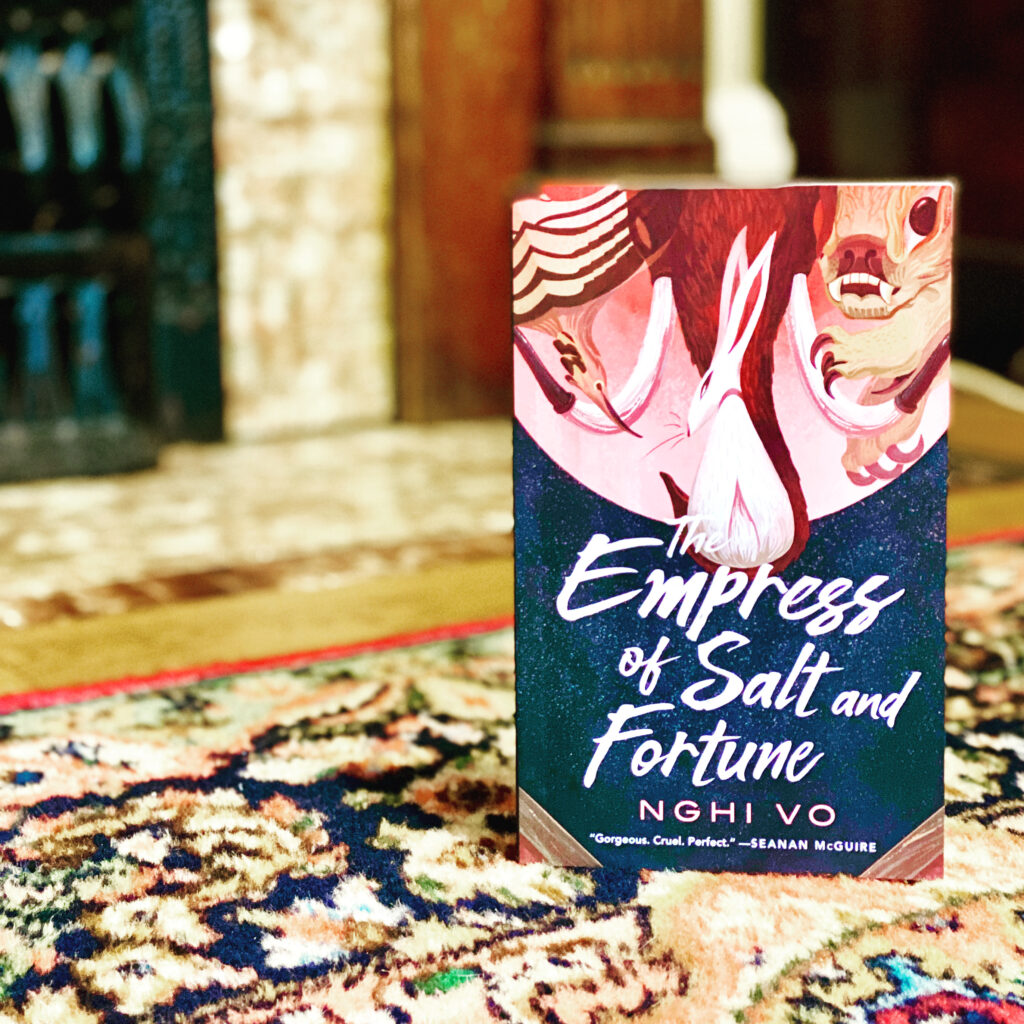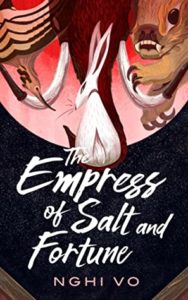
But as it stood as the first book in a series, I felt very much dropped in the middle of the world. I could totally see it as the origin story of In-Yo, or even the current Empress. This would have worked much better as a prologue in my opinion. Which leads me to my next point-I’m still confused. It was all soooo intriguing, but was only ever explained superficially. There were so many interesting concepts I wanted to see more of: the magic system, the road paved with ghosts (but only at night?), the Dragon Court. The writing was definitely beautiful and transportive, but as with many fantasy short stories, I found the world building disappointing. I did appreciate her morally grey aspects, but like Chih, I wanted to see more direct interactions involving her. In-Yo teetered on the edge of mystical/unknowable and not having enough detail. Rabbit was pretty cool, and seemed the most developed of any of the characters. I kind of wish we saw more of them because I think they would be very interesting to watch interact with other characters. It is filled with love and friendship but also loss, revenge, and sacrifice.ĭespite the fact that they don’t really end up being the main character, I did really like Chih. I was promised by a friends’s review a “magical and cheerful” book, and while there was some magic, I definitely wouldn’t describe this book as cheerful. Told through the memories passed between an old woman named Rabbit and a non-binary Cleric named Chih, Empress of Salt and Fortune chronicles the unknown pieces of Empress In-Yo’s story. Like the story itself, the significance of these chapter starters eluded me.Chih is traveling to see the eclipse and the new Empress’ Dragon Court When she stops to record the contents of the house Thriving Fortune, Empress In-Yo’s residence while she lived in exile.


The most detailed descriptions are of the objects described at the start of each chapter (Like ch10: “Tin shrine token: badger with one paw raised…” or ch2: “robe: silk, silk thread, ruby bead, green background embroidered with darker green leaves…”). Add in the confusion of the cleric Chih being unevenly called “she” on occasion and “they” more often than not, and it took effort to read between the vague lines of this story to see the picture hidden behind the shoji screen. Magic’s role is little more than myth and prophecy. Much of the novella is told by indirect references to things, from two characters coupling to the disappearance of this, that, or the other woman. Overall, I loved the mood, liked the concept, but got a little lost in the execution.

I realize haikus are from a different Asian venue… but the novella itself mixes themes like feudal Asia, fantasy and modern gender monikers, so I feel like the simile works.


 0 kommentar(er)
0 kommentar(er)
